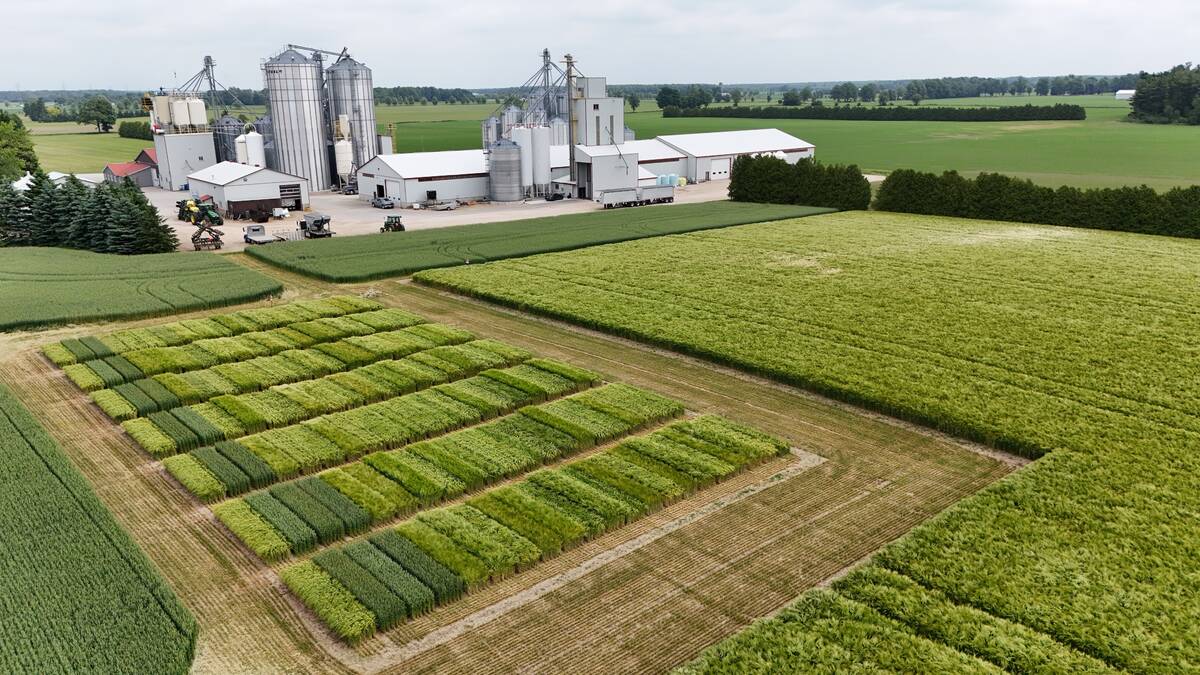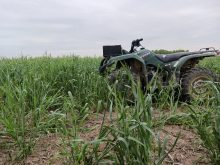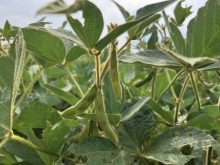It’s no longer a matter of ‘if’ waterhemp comes to your farm, it’s ‘when.’
Those were the words of Richard Anderson, a business representative with BASF, speaking last month at the Southwest Agricultural Conference at University of Guelph’s Ridgetown Campus. It was probably the most pertinent take-home message from a panel discussion on tackling waterhemp, held during the conference’s virtual kickoff Jan. 3.
Why it matters: Waterhemp has become a leader in resistance to herbicide modes of action. In the U.S., there are biotypes now resistant to seven different groups.
Read Also

Winter cereals beyond wheat gaining traction
Winter cereals such other than wheat, such as barley, could provide better yield and rotation options for Ontario growers.
The panel included Anderson, Ryan Benjamins from Benjamins Agronomy Services, Johanna Lindeboom from Clark Agri Service and Lauren Benoit from Bayer CropScience.
Mike Cowbrough, weed specialist with the Ontario Ministry of Agriculture, Food and Rural Affairs, moderated the discussion. He led off the session with some sobering numbers on the impact of waterhemp. For starters, resistance testing in the province between 2002 and 2023 revealed that 93 per cent of plants tested were resistant. The remaining seven per cent were susceptible.
A breakdown of 195 waterhemp populations tested in Ontario offered more stunning information:
- 88 per cent showed resistance to Group 2 herbicides — Pursuit, Pinnacle and Classic.
- 72 per cent were resistant to the Group 9 herbicide glyphosate.
- 57 per cent were resistant to Group 5 herbicides — Atrazine, metribuzin.
- 52 per cent were resistant to Group 14s — Reflex, Affinity, Blazer.
- Seven per cent showed resistance to Group 27s — Infinity, Callisto.
“It’s no surprise that waterhemp is resistant to some sort of herbicide,” said Cowbrough. “To make matters worse, it can be resistant to a number of different herbicide groups all at the same time.”
The majority of waterhemp, he added, is resistant to more than one mode of action: 37 per cent is resistant to at least three modes, 27 per cent to two modes, 19 per cent to four modes and six per cent to six modes.
Resistant biotypes have been confirmed in 18 counties, with most in southern Ontario. Essex and Lambton were the highest with resistance to multiple modes of action, with Chatham-Kent in a distant third position. Surprisingly, a resistant and susceptible population has been found in Rainy River in northwestern Ontario.
Managing waterhemp
Cowbrough then asked the panelists for their assessment of how to manage resistant waterhemp, noting there are two types of individuals dealing with the issue: those with first-hand experience, either on their own farm or in their area, and those who’ve heard of waterhemp but have yet to encounter it in their fields.
Anderson said finding it and familiarizing oneself with what it looks like and how it’s growing are the keys to dealing with it. It’s also vital to plot a Plan A, B and C on what to do when, not if, waterhemp is confirmed on a farm. Anderson noted later in the session that he’s working with his customers on five-year cropping plans in an effort to reduce the risk and damage. He also advised rotating chemistries as well as crops.
For Ryan Benjamins, managing waterhemp requires a good start to the growing season. He echoed Anderson’s comment about advanced planning and linked it to the use of herbicides with residual activity, which may help reduce waterhemp’s impact and help with other weed species in a field.
“Soybeans are not competitive, so having a residual to start is a huge step,” said Benjamins.
“Maybe you have a grass problem so you can add a Group 15 herbicide that might buffer you a little on waterhemp but also give you some grass residual.”
Johanna Lindeboom said soybeans is the crop where waterhemp likely appears. If it’s possible to grow IP soybeans, or grow a cover crop after winter wheat, those actions would help.
“If you don’t have a good crop rotation or you’re growing beans-on-beans, that could be an issue,” she added. “It also moves through equipment, so if you get a lot of custom work, that could be a chance for waterhemp in your area to find its way to your farm.”
Custom operators often have a tough time doing a thorough cleanout, given the number of acres they’re servicing. There is also a need for awareness when purchasing used equipment and whether that unit is coming from an area where waterhemp is a problem.
Asked if there were other “risky behaviours,” Laura Benoit noted that waterhemp seeds can float and animals can move seed onto a farm. Those are hard to control, but scouting and knowing what to look for are the two most important factors after equipment-spread seed.
In the absence of carrying a pocket magnifying glass for identification, Benoit suggested using a smartphone camera with a zoom function to get a clear glimpse of waterhemp’s key features, including hairless leaves and stems, a shiny or waxy texture to the leaves and leaves narrower than other pigweed species.
Above all, if you’re not sure what you’re looking at, get someone who is to have a look.















